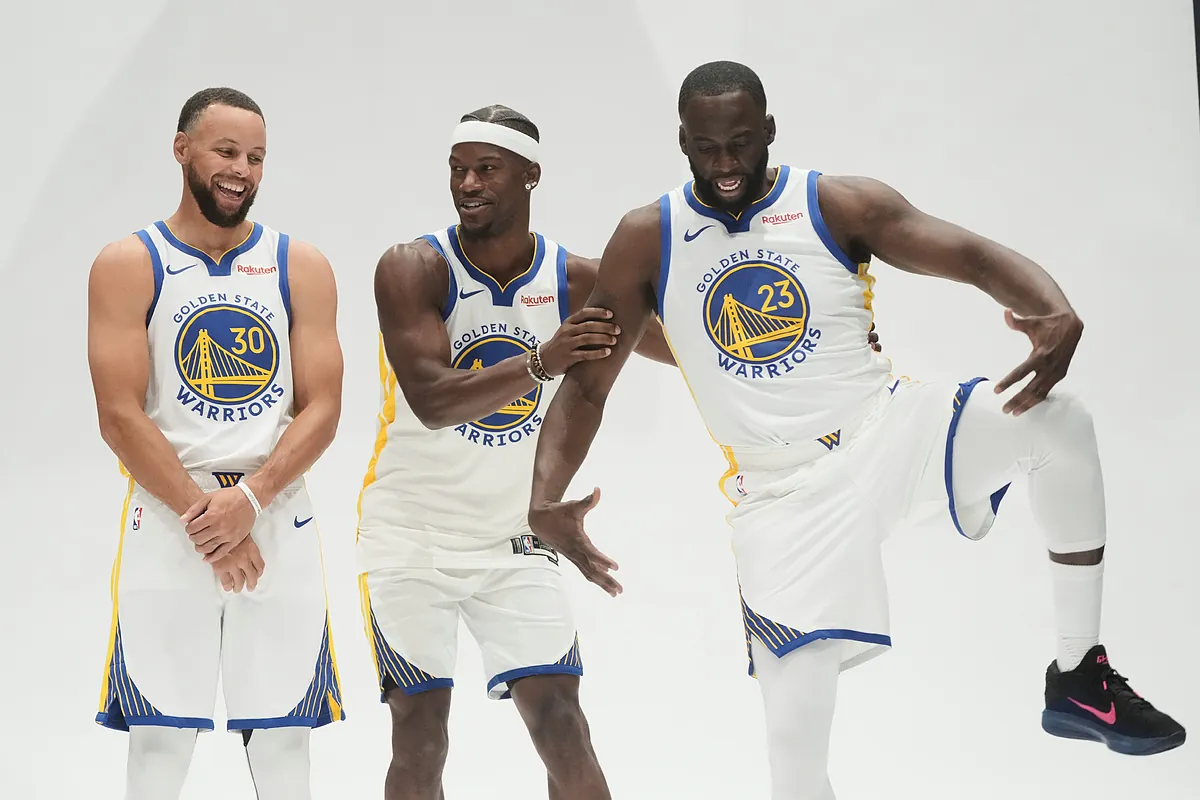
The Golden State Warriors find themselves in a peculiar spot this offseason: far from being crowned perennial comeback contenders, they’re also being teased mercilessly for their age.
With the team locking in a new starting five including Stephen Curry that averages nearly 36 years old, basketball observers and fans alike have leaned into “Unc” jokes and took to calling the squad a basketball “retirement home.”
Stephen Curry’s play that had fans losing their minds Vertical
For many, the ridicule feels like a microcosm of the tension surrounding the Warriors’ direction. On one hand, this is a franchise that has relied on experience, high basketball IQ, and championship pedigree.
On the other, the league is trending younger, faster, and more explosive – and Golden State’s aged nucleus may increasingly feel like it’s trying to hold onto a fading window.
The stats that prove Golden State roster is aging
In reality, the numbers back up the mockery. The potential starting lineup in 2025-26 would include Stephen Curry (37), Jimmy Butler (36), Draymond Green (35), Al Horford (39), and a guard slot like Buddy Hield, which puts the average age right around 35.8.
The Warriors’ roster – especially the piece of the pie comprising Curry, Green, and Butler – is already the butt of age jokes.
Fans and commentators haven’t held back. One quip floated on social media reads: “They set up a retirement home.” Others point to the ironic moniker “Unc,” a term often attached to players of advanced age in league slang, to mock how stretched the Warriors’ age profile has become.
Golden State’s embrace of veterans is not new. The organization’s identity has long blended experience with shot-making and high basketball IQ.
But this latest iteration signals a deeper commitment to that identity than perhaps some expected. The addition of Horford – himself 39 – only compounds the narrative.
From the Warriors’ perspective, fielding such a seasoned core offers clear advantages. The veterans have seen late-game pressure, understand pacing and matchups, and often make intelligent plays in situations where younger squads might overcommitt. Experience in playoff intensity and the ability to manage a game’s flow are valuable currencies.
Balancing the risks between experience and injuries
Still, there is mounting risk. Older players are more injury-prone, recovery is slower, and bursts of athleticism tend to fade faster.
Curry himself suffered a hamstring strain late in the 2025 playoffs, which derailed the team’s push in the Western Conference Semifinals. Even if this lineup executes perfectly, the margin for fatigue or breakdowns is thinner.
Then there’s the aesthetics. To some, a more youthful, energetic, and dynamic roster holds more appeal, especially in today’s climate of pace-and-space basketball. If the Warriors’ starters are perceived as slow or vulnerable, the “retirement home” jokes might stab harder.
Golden State is essentially betting that upside and chemistry will outweigh the age narrative. They’re leaning on a core that’s played together, understands the system, and can help elevate younger contributors around them.
But there’s a balancing act. If injuries mount or the wear shows, the criticism could become more than memes. The Warriors could be seen as outdated or frozen in time – chasing past glory instead of adapting to the evolving league.
At the very least, the jokes keep coming. Aging is part of the story now, and the “Unc” digs may linger longer than any noise about roster moves or draft acquisitions. For Golden State, the question is whether this veteran tapestry will produce results – or just applause for past accomplishments.
For now, they’ll have to deal with “retirement home” jabs while trying to prove those jokes are premature.
This news was originally published on this post .





Be the first to leave a comment